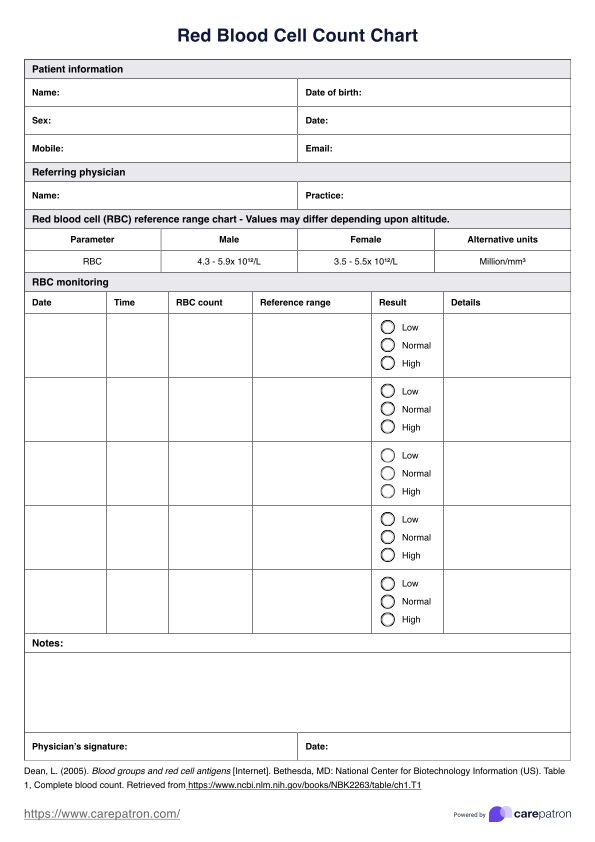A complete blood count (CBC) is a common blood test that evaluates several blood components, including red blood cells, white blood cells, and platelets. In contrast, an RBC count specifically measures the number of red blood cells, which carry oxygen to body tissues, providing valuable insight into their health and function.

Red Blood Cell Count
Gain valuable insights into your patients RBC levels with our Red Blood Cell Count Chart—a professional tool designed to support a comprehensive understanding of blood health.
Red Blood Cell Count Template
Commonly asked questions
Blood cell counts can be influenced by various factors. For instance, kidney disease can lower RBC counts by reducing the production of a hormone called erythropoietin, while bone marrow disorders and white blood cell cancer may disrupt normal blood cell production. On the other hand, conditions like pulmonary fibrosis or renal cell carcinoma can cause high RBC counts due to compensatory mechanisms for low blood oxygen levels.
Normal RBC count ranges provide reference values for interpreting laboratory results, helping to diagnose medical conditions like anemia, bone marrow disease or blood disorders. These ranges can vary slightly depending on factors such as age, gender, and the laboratory’s testing methods. Tracking normal RBC counts is essential for identifying abnormalities and determining appropriate treatment plans.
EHR and practice management software
Get started for free
*No credit card required
Free
$0/usd
Unlimited clients
Telehealth
1GB of storage
Client portal text
Automated billing and online payments











